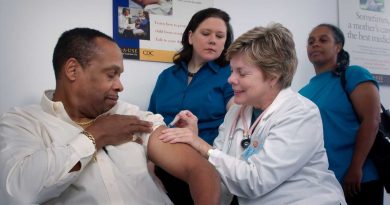Proposed farm bill would put nutritious food further out of reach for vulnerable Americans, advocates say
The House of Representative’s proposed farm bill could have far-reaching effects on Americans living with chronic diseases like heart disease and stroke, advocacy groups say.
Last month, the House released its version of the farm bill that proposed sweeping changes to hunger assistance programs, including the Supplemental Nutrition Assistance Program (SNAP).
The provisions would mean stricter work requirements and reduced funding for nutrition education initiatives. Millions would either have their benefits decreased or be cut from the program.
The House and Senate still must reconcile their versions of the farm bill. The Senate’s bipartisan proposal ensures that vulnerable populations, including children, the elderly and the disabled, still have access to SNAP benefits.
More than 40 million Americans, including an estimated 16 million children, struggle to put food on the table. SNAP, formerly known as food stamps, is the nation’s most prolific anti-hunger program, serving one out of every eight Americans.
Whether temporary or chronic, research shows food insecurity is devastating for Americans struggling with serious illnesses.
SNAP is designed to help mitigate the risks of food insecurity, and has been shown to improve some health outcomes. In households that receive SNAP benefits, children have lower rates of hospitalization compared with similar households not participating in SNAP. The program has also been linked to positive health outcomes in adulthood, including reduced risk for obesity, high blood pressure, heart disease and diabetes.
Most SNAP recipients who can work do so, research shows. Among households with at least one working-age, non-disabled adult, more than half work while receiving SNAP. More than 80 percent of SNAP recipients work in the year before or after receiving SNAP, with rates being even higher for households with children.
“People don’t do anything well if they don’t have enough to eat,” said Asha Carter, community outreach specialist at D.C. Greens, a food justice nonprofit in Washington, D.C. From finding stable employment to having regular medical appointments, Carter said food insecurity should not be viewed as an isolated issue.
D.C. Greens is using input from SNAP recipients to create programs that better align with peoples’ needs. Its Produce Rx initiative, which is similar to a provision in the Senate farm bill, provides patients who are at risk or experiencing diet-related chronic illnesses with a monthly “prescription” for fresh fruits and vegetables from their health care provider that they can redeem for food at farmers markets.
Carter said the response from both SNAP recipients and physicians has been overwhelmingly positive. D.C. Greens is currently working on expanding the program by partnering with a grocery store in one of Washington, D.C.’s poorest neighborhoods.
As groups like D.C. Greens work to put healthier food within reach for vulnerable populations, nutrition groups look for solutions that encourage healthier eating habits among SNAP recipients.
“Currently, [SNAP] is sending competing messages,” said Angela Rachidi, a poverty studies research fellow at the Washington, D.C.-based American Enterprise Institute. “It’s the largest nutrition assistance program, yet it allows unhealthy products to be purchased.”
Research into SNAP diet quality is ongoing, but current literature suggests that despite the program’s documented success in reducing hunger, SNAP still needs improvements to address issues related to diet quality.
A 2012 study that analyzed the diets of 3,835 low-income adults found SNAP participants consumed 39 percent fewer whole grains, 46 percent more red meat and, among women, 61 percent more sugary beverages.
As Congress irons out the details on the future of SNAP, health groups such as the American Heart Association say cutting SNAP benefits would be devastating.
“If we truly want to see better health outcomes, we need to make nutrition a priority,” said AHA CEO Nancy Brown.
Source: Read Full Article



